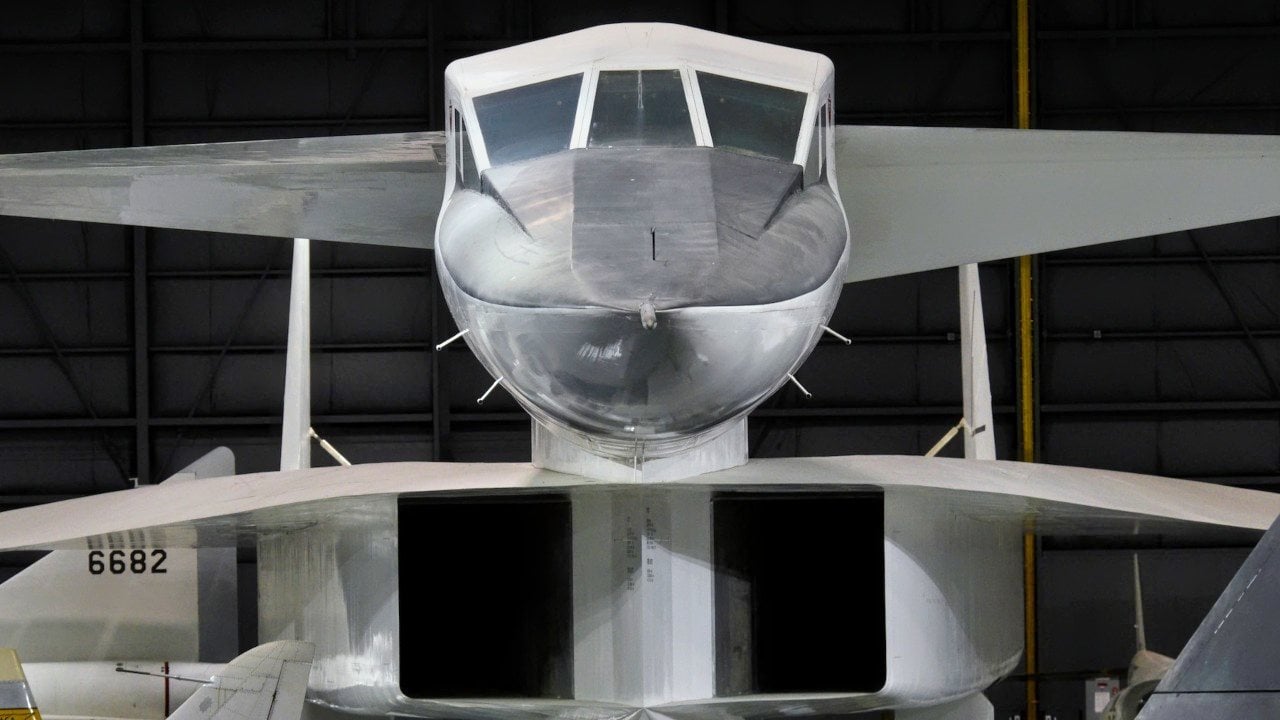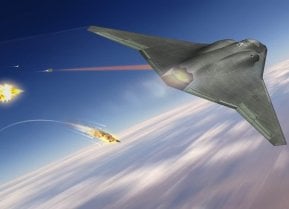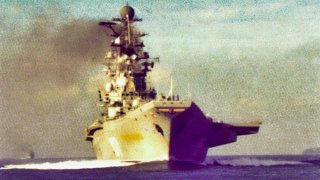Russia Had 5 'Game Changer' Super Military Weapons It Never Built
For nearly seven decades, the Soviet defense-industrial complex matched Western firms, occasionally surprising with cost-effective innovations but sometimes struggling with reliability. Key weapons might have altered the USSR's decline trajectory, highlighting the intricate interplay between technology and warfare's human aspects.
Summary: For nearly seven decades, the Soviet defense-industrial complex matched Western firms, occasionally surprising with cost-effective innovations but sometimes struggling with reliability. Key weapons might have altered the USSR's decline trajectory, highlighting the intricate interplay between technology and warfare's human aspects. The Sovetsky Soyuz battleships, Orel and Ulyanovsk aircraft carriers, interwar heavy bombers, Tu-42 super-heavy tank, and Sukhoi T-4 bomber represent pivotal, though unrealized, projects. Each exemplified ambitions and limitations, from grand naval aspirations to strategic air power, underlining the complex choices impacting military and national strategy, ultimately shaping Soviet military capabilities and strategic direction amidst technological and ideological contests.
Russia's Big Military Dreams
For nearly seven decades, the defense-industrial complex of the Soviet Union went toe-to-toe with the best firms that the West had to offer. In some cases, it surprised the West with cheap, innovative, effective systems. In others, it could barely manage to put together aircraft that could remain in the air, and ships that could stay at sea.
No single weapon could have saved the Soviet Union, but several might have shifted the contours of its collapse. The relationship between technology and the “human” elements of war, including doctrine and organization, is complex. Decisions about isolated systems can have far reaching implications for how a nation defends itself.
As with prior list, weapons are often cancelled for good reason. Events intercede in ways that focus a nation’s attention on its true interests and needs, rather than on the pursuit of glory and prestige. In the Soviet case, many of the “wonder weapons” remained safely in the realm of imagination, both for the enemies of the USSR, and the USSR itself.
Sovetsky Soyuz class battleship:
During the interwar period, the Soviet Union explored a variety of options for revitalizing its decrepit fleet. Until the first decade of the twentieth century, the czars had maintained a relatively modern, powerful navy. After the Russo-Japanese War, however, Russian shipbuilding fell steadily behind the West, and the Revolution disrupted both the industry and the Navy itself.
By the late 1930s, the Soviet economy had recovered to the point that Stalin could seriously consider a program of naval construction. The Sovetsky Soyuz class battleships spearheaded an ambitious acquisition plan, which also included battlecruisers and aircraft carriers. Based loosely on the Italian Littorio class, the Sovetsky Soyuzs would displace approximately 60,000 tons, carry 9 16” guns, and make 28 knots. This made them competitive in size with the most powerful battleships in the world, although inexperience and shoddy Soviet construction practice would likely have rendered them troublesome in battle.
The Soviet Union laid down four of the intended sixteen battleships between 1938 and 1940, parceling out construction between Leningrad, Nikolayev (on the Black Sea), and Molotovsk (on the White Sea). One was cancelled in 1940 because of poor workmanship. The other three were suspended on the arrival of war, although plans proceeded to complete one (in Leningrad) even after World War II ended. Wiser heads eventually prevailed, and the ships were broken up in place.
Construction of the ships required an enormous investment of Soviet state resources. Had construction begun earlier, the USSR would have wasted a fair chunk of national income on three ships that could not escape the Baltic and the Black Sea, respectively, and one that would have been limited to convoy escort in the Arctic. Literally any use of materials and industrial capacity would have served the USSR better in war than these four ships.
The Orel and Ulyanovsk class aircraft carriers:
The Soviet Union began to study aircraft carrier construction shortly after the Revolution, but as with battleships the disordered economy, the backward state of Soviet industry, and the Second World War disrupted planning. After the war, and after a briefly ambitious effort under Stalin, Soviet authorities undertook more modest, sequential efforts at carrier construction. The Moskva class helicopter carriers entered service in the mid-1960s, followed by the Kiev class VSTOL carriers in the 1970s and 1980s.
The next step was complicated. Some favored another sequential step, while others argued for pushing forward to a full supercarrier (what would have been the Orel project). The Soviet Navy took the gradual path, working out improvements to the Kiev class and initiating what would become the Kuznetsovs, conventionally powered medium-large ski-jump carriers.
The Soviet Navy expected the Ulyanovsk class to succeed the Kuznetsov. Displacing over 80000 tons, with a nuclear power plant, the Ulyanovsk were the first real Soviet competitors to the American supercarriers. Although Ulyanovsk would retain a ski-jump, it would have had sufficient catapult capacity to launch strike-laden fighters and early warning aircraft, make it more or less equal to its American contemporaries. For the first time, the Soviet Navy would have possessed a carrier capable of long-range offensive operations around the globe.
However, as with so many Soviet weapon systems, catastrophe intervened. The end of the Cold War, and the collapse of the Soviet Union, made completing the Ulyanovsk a dicey proposition, and the only hulk was broken up. In hindsight, the gradual approach had much to say for itself, as it resulted in a force of sea control ships and a cadre of naval aviators. The decision to forego the full supercarrier, however, meant that the Soviet Navy could never offer friends (or enemies) the same kind of reassurance as the U.S. Navy. It meant adherence to a reactive naval strategy rather than a proactive effort to offer an alternative to the Western maritime system. But then the Soviets may not have had much to offer, in any case.

Interwar Heavy Bomber
Although the Soviet Air Forces never developed a reputation for strategic bombing during World War II, in the interwar period the Soviets experimented heavily with long-range, four engine bombers. Indeed, at the outbreak of war the Soviet Union fielded more of this type than any other country, although most of these were antiquated TB-3s.
By the time the war started, the Soviets had settled on the Pe-8, a bomber very roughly comparable to the Avro Lancaster and the Boeing B-17. The Pe-8 never achieved the same level of success as those two aircraft, largely because of construction and supply problems. However, during the process of development, the Soviet Air Forces had experimented with some truly grandiose projects, including the K-7 heavy bomber, which looked like a Junkers fever dream and crashed on its eighth test-flight, killing 14 aboard.
The most promising line of development revolved around the TB-3/ANT-20/TB-6 family, which were all monstrous aircraft of six engines or more. The concept sacrificed speed and maneuverability for heavy armament, based on the theory that bombers flying in formation could defend themselves from pursuit aircraft. The ANT-20 transport had eight engines and could carry 72 passengers, at least before the prototype plowed into a Moscow neighborhood, killing 45 people. The ANT-26, a potential bomber variant of the ANT-20, would have had twelve engines and a bomb load exceeding 33,000 pounds, considerably greater than a B-29.
Only prototypes of these beasts ever got off the ground, and usually not for long. Had the Soviet Union decided to go this direction, it likely would have severely retarded the development of Soviet tactical aviation, as well as draw resources away from the ground forces of the Red Army. Giant ANT-26s would likely have proven easy pickings for German interceptors, although at least they could have flown from bases beyond the range of the Luftwaffe. Unlike the Western Allies, the Soviet Union didn’t have the luxury of wasting resources on an extended, expensive strategic bombing campaign; it needed to defeat the Wehrmacht on the field of battle. Had the USSR chosen the strategic bombing route, it might have been unable to resist the German advance.
Tu-42 Super-heavy tank:
German and Soviet tank designs converged somewhat in the 1930s because of the shared experience of the Kazan Tank School. Both international pariahs, Weimar Germany and the Soviet Union began a fruitful collaboration in the late 1920s on air, armor, and chemical weapons. By the time the rise of the Nazis ended the collaboration, both the Soviets and the Germans possessed innovative new ideas for armor technology and employment.
During the interwar period several countries contemplated the construction of “super-heavy” tanks, vehicles that would weigh three, or even four times as much as a standard battle tank. One German designer in particular, Edward Grotte, worked on super-heavy designs for both Germany and the Soviet Union. The most interesting of the several designs presented to the Soviet General Staff was the T-42, a 100 ton beast with three turrets, a speed of 17 MPH, and a crew of 14-15.
The T-42 never made it to prototype stage, but did earn some serious consideration in Soviet military circles. Other, somewhat more realistic projects included the T-35, T-100, SMK, KV-4, and the KV-5. Only the T-35, a 45-ton tank with 5 turrets, made it to production. Nearly all of the 61 vehicles were lost in the opening stages of Operation Barbarossa, usually to mechanical defect and crew abandonment.
Like most of its super-heavy kin, the Tu-42 was too heavy, too costly, and too slow to put into serious production. Had the Red Army determined to acquire the beast, however, it would likely have proven a disastrous liability in battles against Japan, Finland, and Germany, potentially distorting Soviet armored doctrine in addition to proving tactically useless.
Sukhoi T-4:
Many of the Soviet bombers of the post-war era were direct analogues to US types. The Tu-4, in fact, was a direct copy of captured American B-29s. The Sukhoi T-4 was the USSR’s answer to the B-70 Valkyrie. A massive, incredibly fast bomber capable of high altitude flight, the T-4 tested (and in many ways exceeded), the limits of the Soviet Union’s defense industry.

Designed to hit Mach 3, with a service ceiling of around 70,000’, the T-4 resembled the B-70 visually, and in capability. However, because the organization of airpower in the Soviet Union differed from that of the United States, T-4s were also considered for tactical missions, such as reconnaissance and the delivery of anti-ship missiles. The idea of a T-4 carrying Kh-22 anti-ship missiles is very scary indeed.


